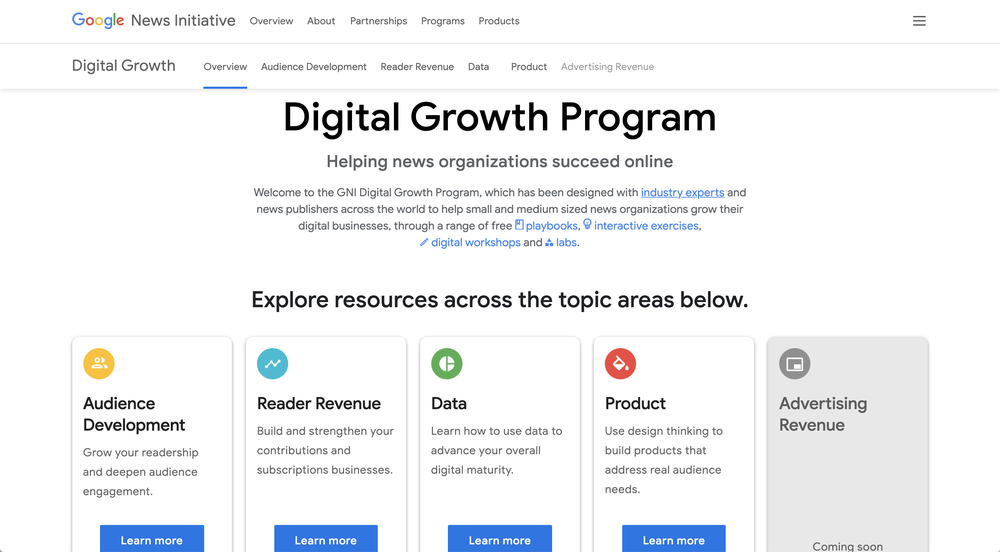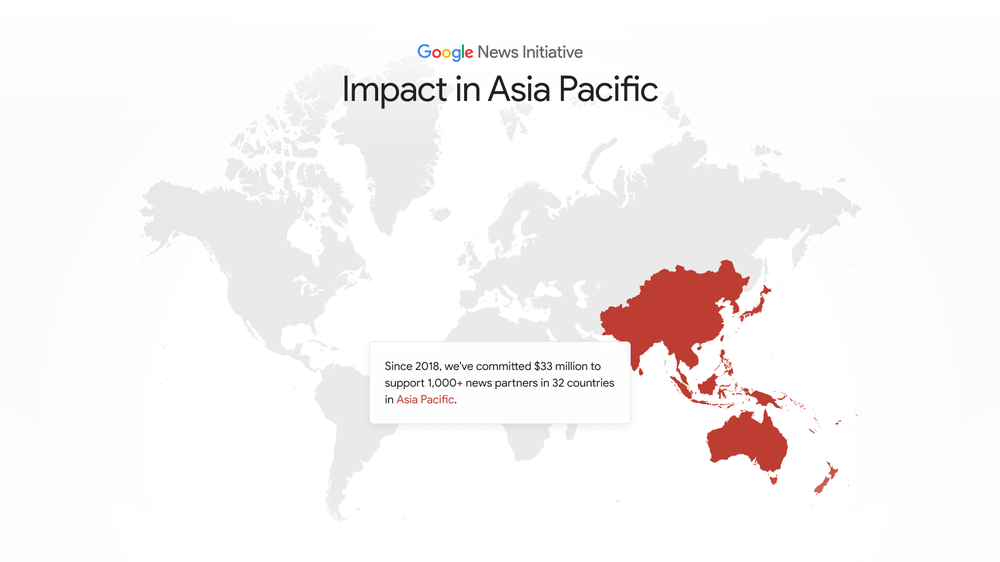For the news industry, COVID-19 has intensified the existing challenges that have come with evolving news consumption patterns and changing technology. In the Asia-Pacific region, publishers are reassessing their business models while remaining committed to quality journalism — at a time when more people around the region are seeking out trustworthy information online.
The Google News Initiative (GNI) is working with many of these news organizations as they work to become digital businesses, from publishers focused on using data to shift their strategy to those looking to adopt new revenue models, and from grassroots publications to groups that represent the industry as a whole.
Across Asia-Pacific, where we've invested $33 million in GNI — and supported more than 1,000 news organizations — we’ve been helping publishers with emergency funds and working with newsrooms to build resilience. And we’ve expanded programs and partnerships aimed at ensuring organizations across the region can make the most of digital technology.
Digital growth trainings and data management tools
News publishers that want to better manage data are using our News Consumer Insights and Realtime Content Insights tools, including Korean and Japanese publishers. We’ve also brought the Digital Growth Program to Asia-Pacific, rolling out localized content on audience engagement, reader revenue and data in Indonesia, Japan and Korea, as well as in English-speaking countries. So far, more than 1,600 practitioners from 260 news organizations across the region have registered for the training.

Helping publishers boost digital subscriptions
In partnership with the World Association of News Publishers, we’ve launched the Asia-Pacific Subscriptions Lab, which aims to help publishers improve how they attract, retain and earn revenue from subscribers. Eight publishers— BloombergQuint, Business Insider Japan, CommonWealth Magazine, The Hindu, The Jakarta Post, Kompas, Malaysiakini and Southeast Asia Globe—participated in the intensive four-month program.

As our report on the Subscriptions Lab shows, publishers are already seeing positive results. The Hindu, for example, achieved a 50% increase in sign-ups by removing sign-up barriers and making offers more visible and easier to compare. Pradeep Gairola, The Hindu’s Vice President and Business Head, said the experience “brought clarity on the possibilities and the way ahead… and gave us insights into strategies adopted by other publishers.”
Elevating quality journalism and fact-checking
We continue to support newsroom talent across the region with a range of verification programs. And as vaccination programs pick up pace, we’re backing organizations working to combat pandemic-related misinformation with stringent fact-checking. Through GNI’s global COVID-19 Vaccine Counter-Misinformation Open Fund, we’re providing grants to three important fact-checking projects in the region.
One recipient, Katadata from Indonesia, is working with the Indonesia Traditional Wet Market Merchants Association. Another recipient, Stuff from New Zealand, has joined up with Māori Television and the Pacific Media Network. And India’s The Quint is leading a broad collaborative project to source hyper-local misinformation and distribute fact-checks through a grassroots network of rural women.
With an eye on the next generation of news leaders in Asia-Pacific, we’ve also kicked off the first GNI University Verification Campaign designed to train tertiary students in fact-checking, including quizzes and video tutorials.
These are just a few examples of our ongoing efforts to support the news industry. We’re learning from our partners all the time, and we look forward to continuing to work with publishers, industry associations and journalism schools as the industry prepares for the post-pandemic future.
